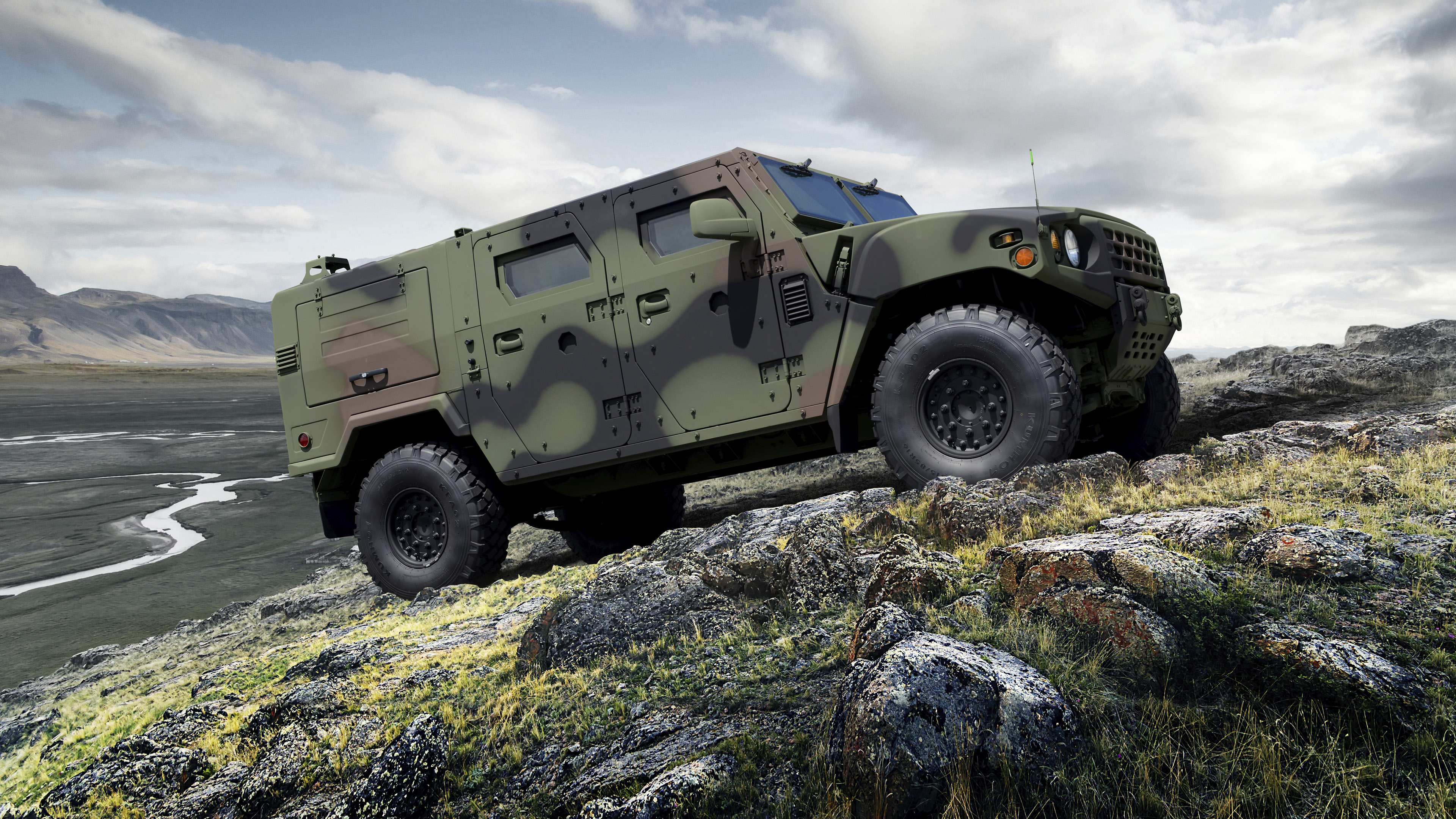
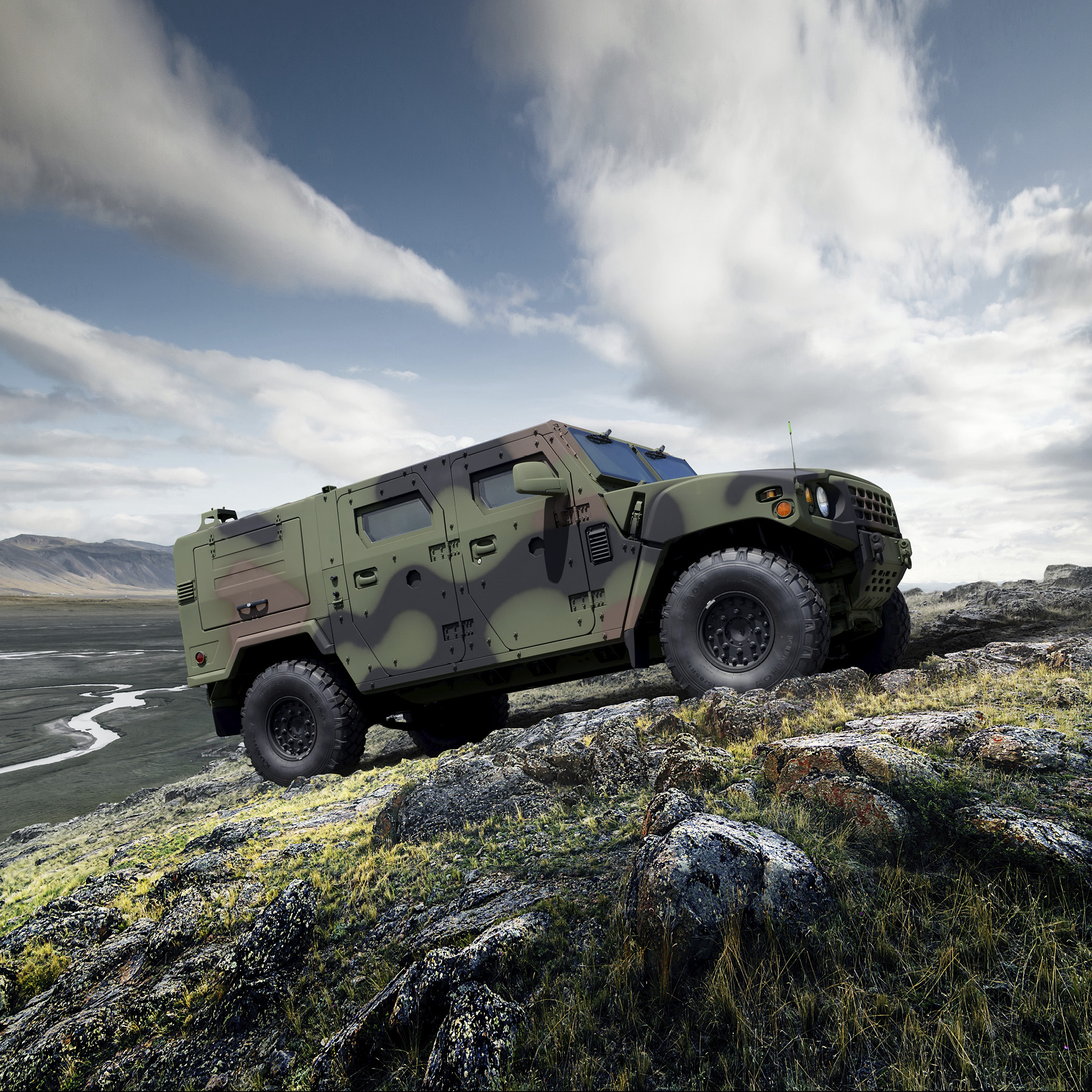


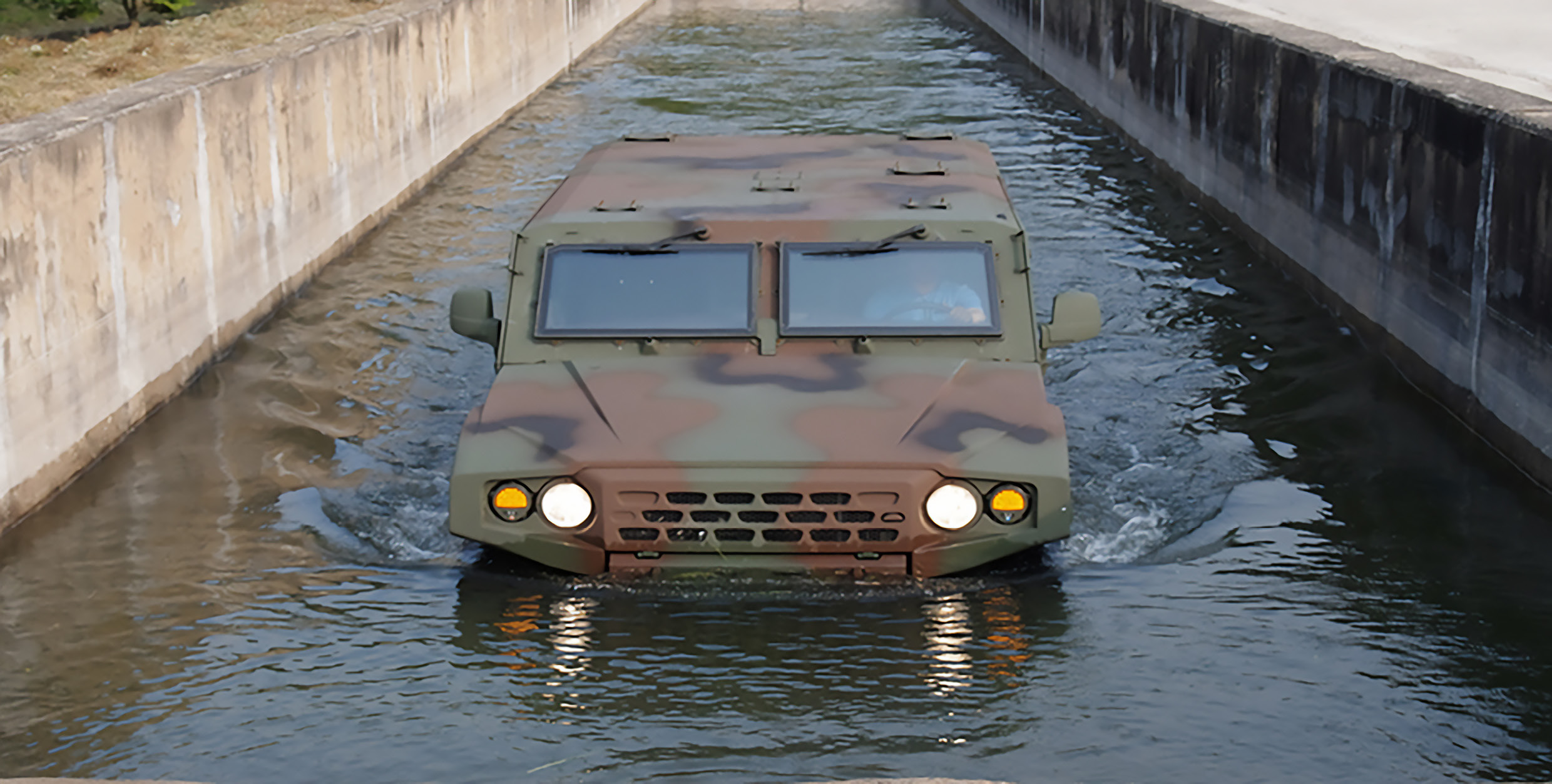
Anyone who has served in the military might have a memory or two associated with military vehicles, as they are a constant presence throughout military life. Military vehicles are broadly classified into standard vehicles, which are models dedicated to military use, and commercial vehicles, which are commercial models used by the military as-is. A common example of a standard vehicle is the 2½-ton truck, often referred to as “Dudonban.” On the other hand, commercial vehicles are those available in the market and used by the military without modifications.
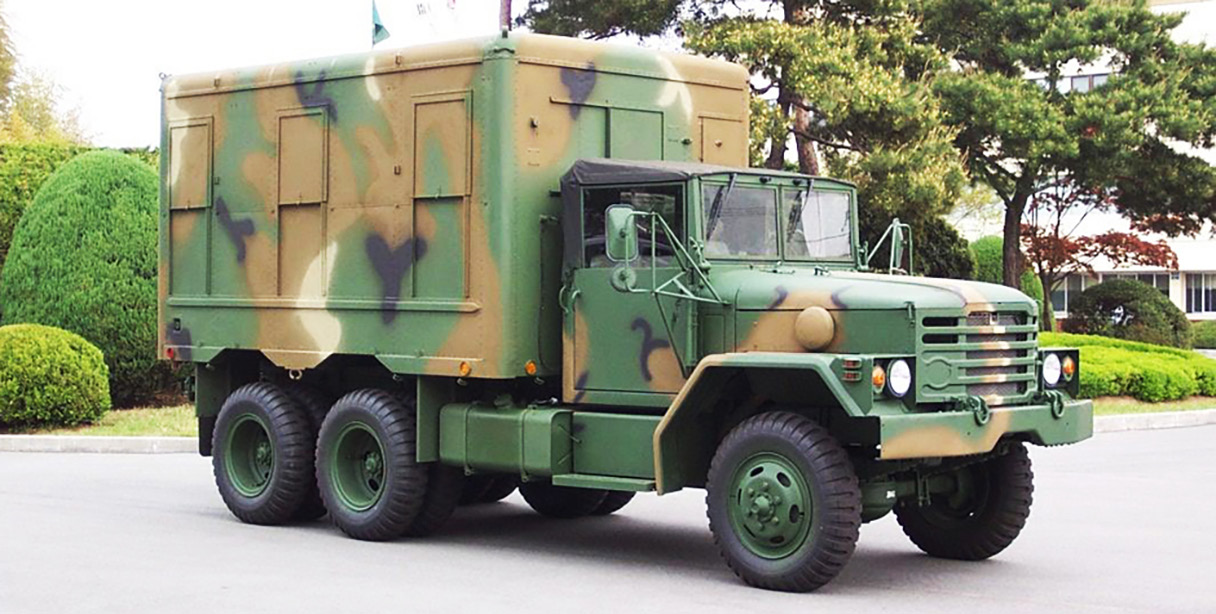
Mobility is a top priority for standard vehicles to ensure safe maneuvering in battlefields. The inability to move during operations could lead to irreversible mistakes. Therefore, capabilities like steep slope climbing and rough terrain escape are crucial. These vehicles use thick steel plates to withstand external impacts and are equipped with battlefield components designed to offer maximum protection against chemical and electronic warfare.
Although commercial vehicles cannot navigate battlefields like standard vehicles, they offer the advantage of being more convenient for everyday use. Common 1-ton trucks like the KIA Bongo are versatile and useful for various tasks within military units.
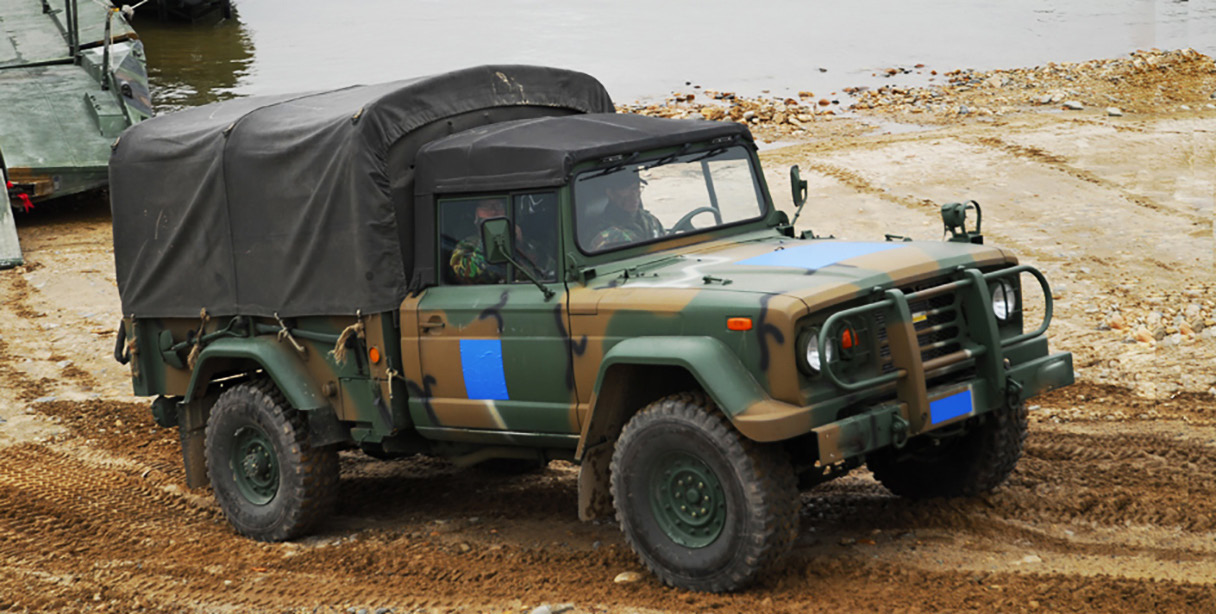
However, most of the standard vehicles Korean military has been using are based on outdated designs, initially adopted to align with U.S. military vehicles. Aligning equipment with that of an ally has several advantages, such as shared parts and maintenance expertise.
Yet, existing equipment has its limitations. Changing battlefield conditions and increasing requirements have made it difficult to use old military vehicles. Not only performance but also driving and maintenance have become more challenging due to outdated designs. This highlights the need for new military vehicles tailored to the Korean environment.
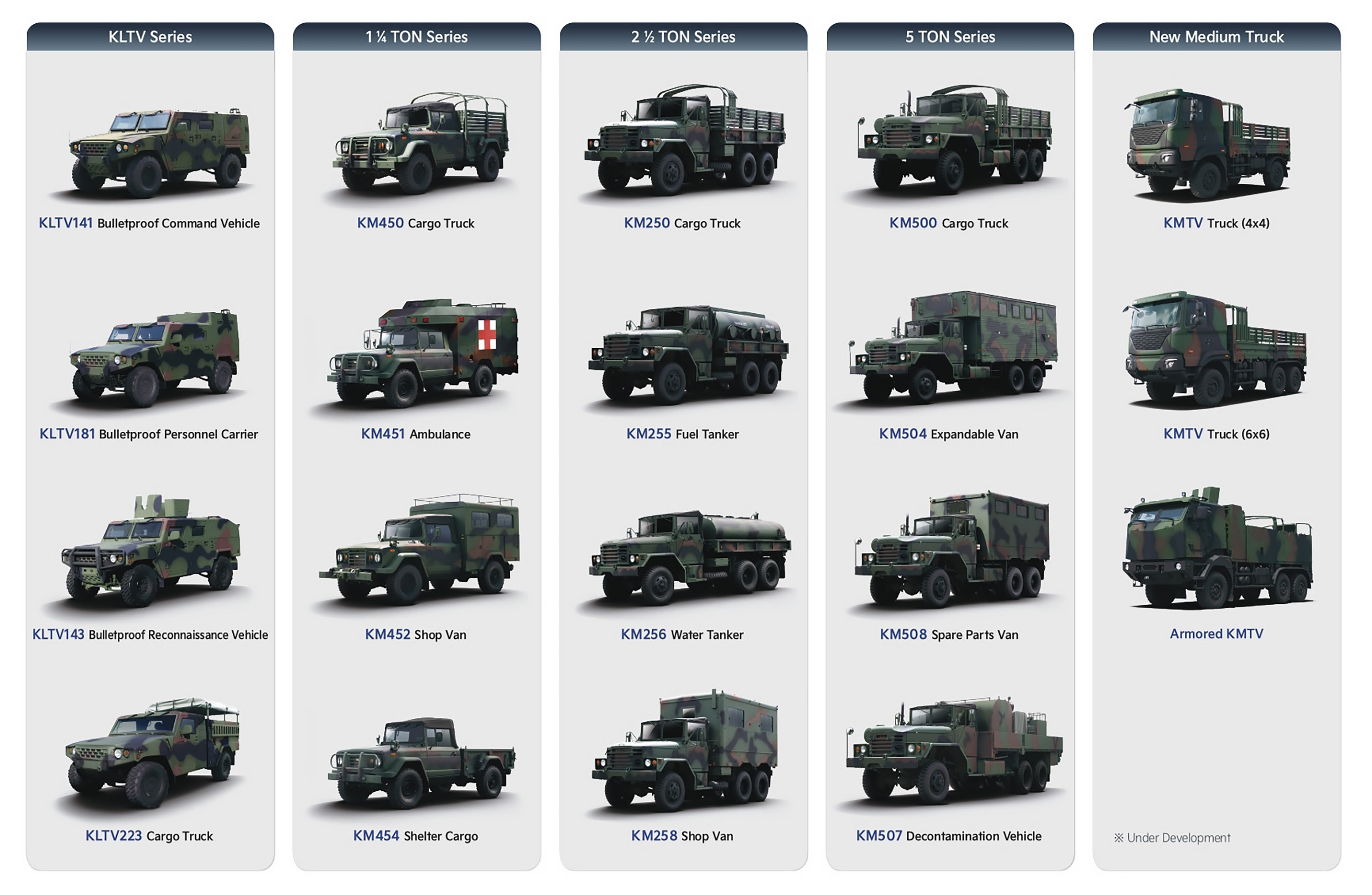
Since being designated as a defense industry company in 1973, KIA has been producing standard vehicles for the Korean military, thereby contributing to enhancing their military’s combat capabilities. Utilizing advanced technology, engines, and transmissions from Hyundai Motor Group, KIA has achieved part standardization, improved military vehicle performance based on the capabilities and environment of a global automotive manufacturer, and contributed to national defense and cost-effective military operations through reasonable supply prices.
The military vehicles developed and produced by KIA also boast superior performance, leveraging the global top-tier automotive development capabilities. While all parts of military vehicles were custom-designed in the past, it is now more advantageous to develop them based on commercial models. This approach meets performance requirements while ensuring high quality and reasonable prices.
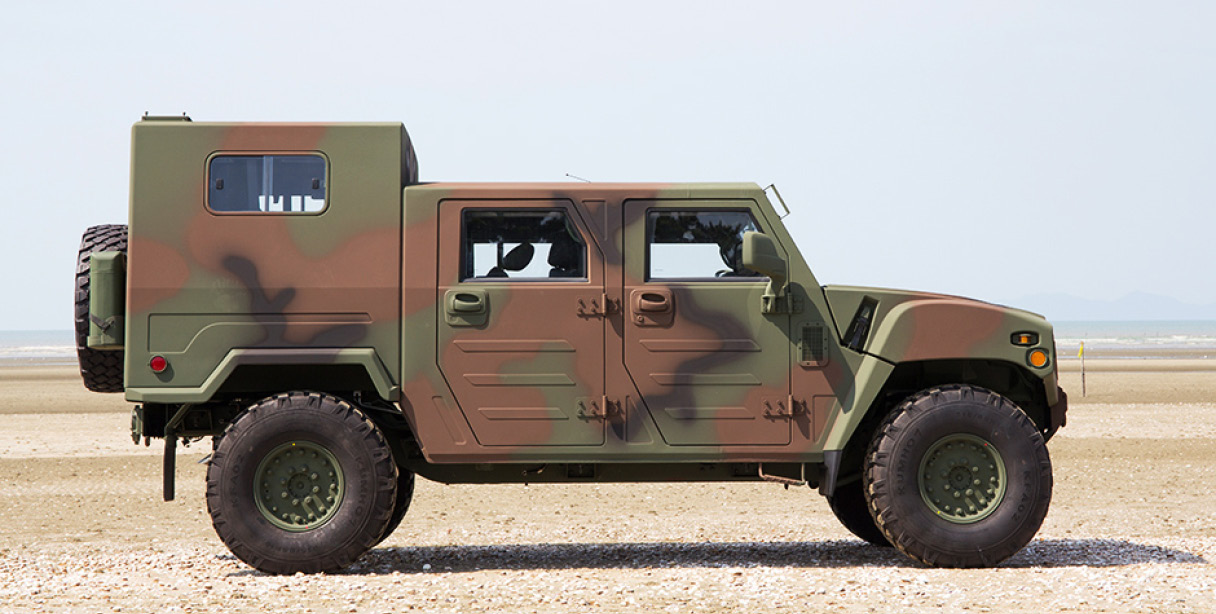
Designing all parts specifically for military use would require significant time for quality and durability testing, and the limited production numbers of military vehicles pose challenges in reducing costs. In contrast, modifying commercial models for military use is more efficient, allowing for the adoption of durability and quality proven in various global markets into military vehicles.
The range of modifications required to meet military performance standards is extensive. The drivetrain, including the engine, transmission, and axles, needs improvements in climbing performance and cold start capability, and waterproofing. Frames and suspension systems are also reinforced to withstand rugged terrains, and electromagnetic countermeasures are incorporated into electrical systems.

Collaboration is essential for such performance improvements. KIA boasts the country’s only specialized military vehicle research institute, “Special Vehicle Research Institute.” A single military vehicle is completed after close coordination between Hyundai Motor Group’s Namyang Research Institute, the Defense Acquisition Program Administration’s Agency for Defense Development, and the Defense Agency for Technology and Quality.
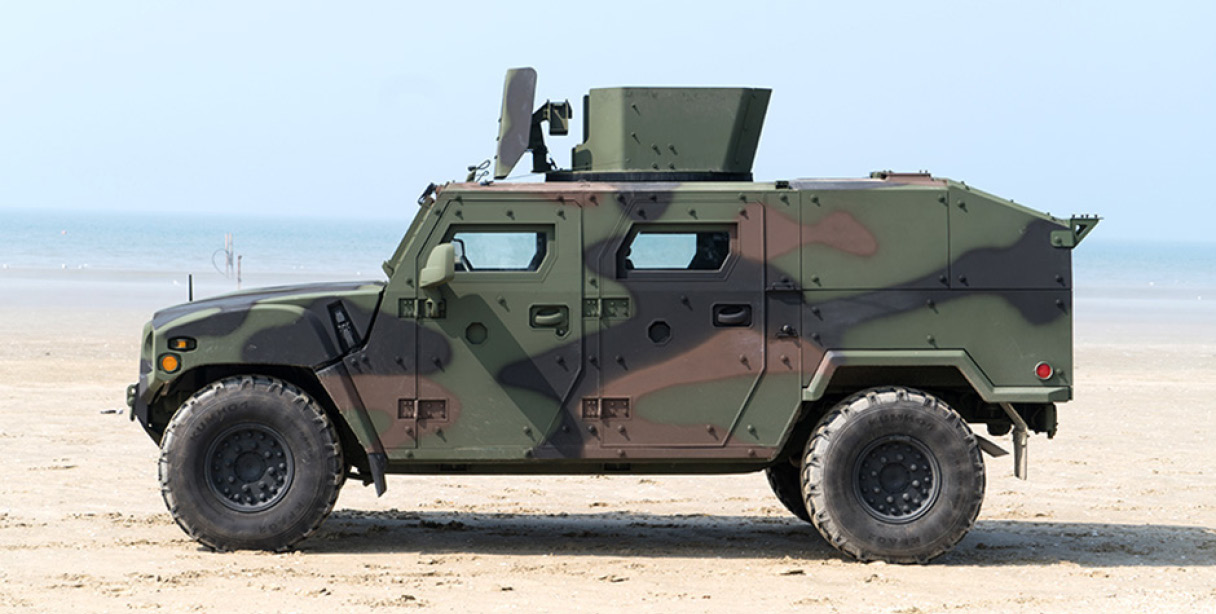
The Kia Light Tactical Vehicle (KLTV) is a completely new model based on the KIA Mohave, intended to replace the existing ‘K-131’ and ‘K-311A1.’ The Light Tactical Vehicle, powered by a V6 3.0L diesel engine delivering a maximum output of 225 horsepower and an 8-speed automatic transmission, can climb slopes with a 60% gradient and reach speeds of up to 130 km/h.
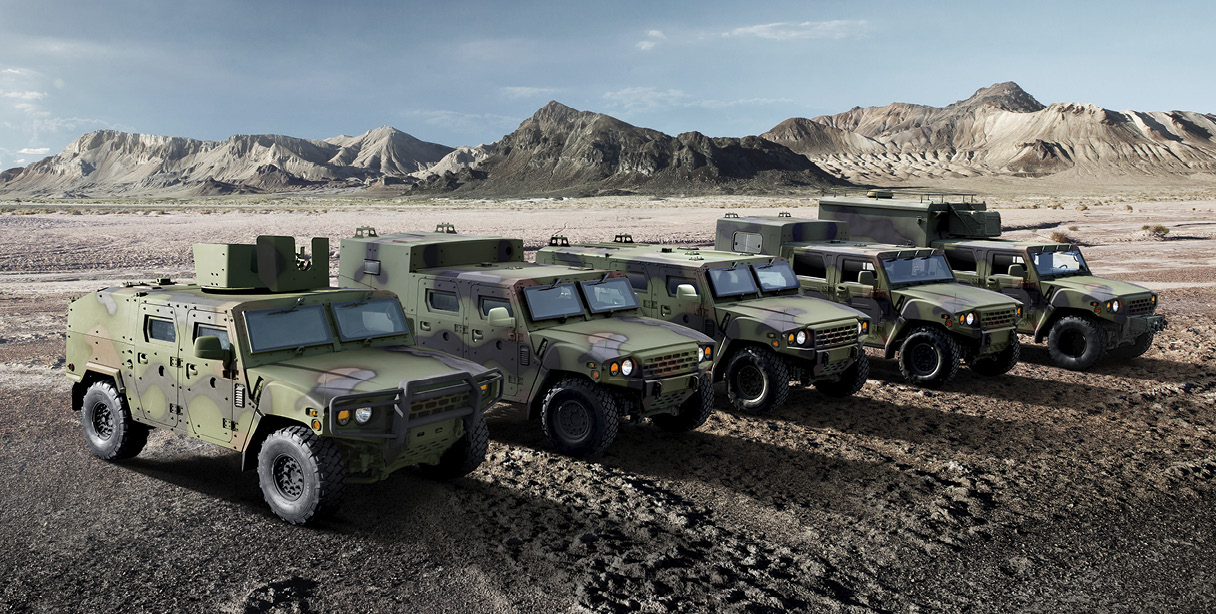
Since 2017, the Light Tactical Vehicle has entered full-scale production and has become a new power for the national military. The armored specification of the Light Tactical Vehicle boasts outstanding performance, capable of withstanding rifle bullets and even hand grenades. It is also equipped with run-flat tires, allowing it to continue driving at 48 km/h even with a punctured tire, making emergency evasion one of its most critical features.
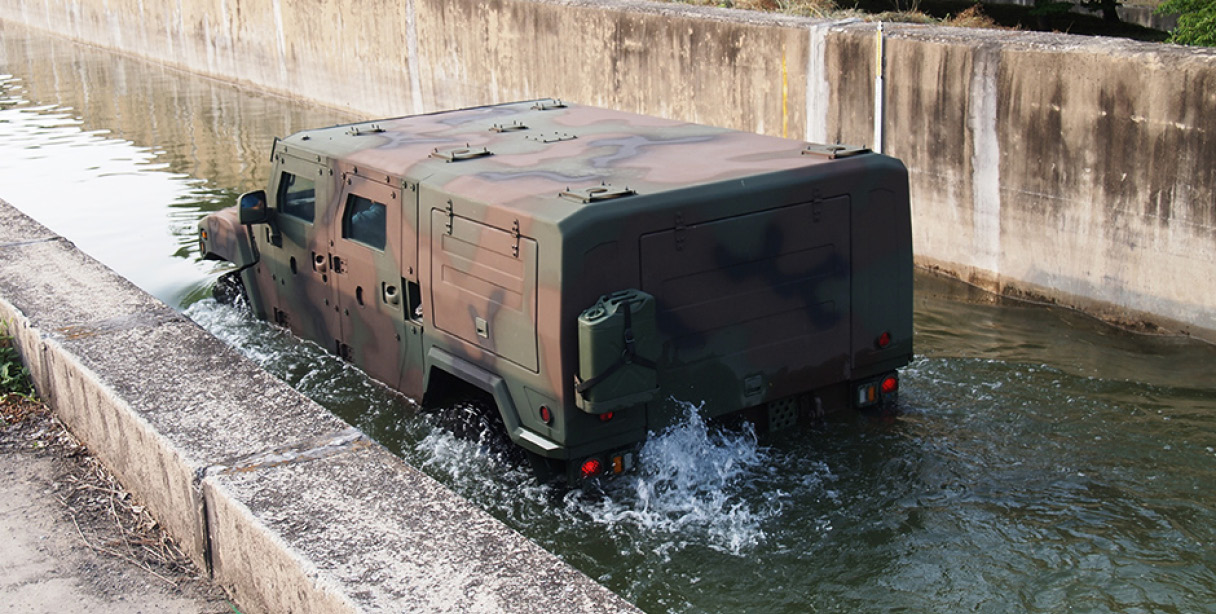
KIA’s Light Tactical Vehicle not only comes in 4-seater and 8-seater command vehicles but also in various specifications such as armored reconnaissance, observation, maintenance shop van, and cab chassis, making it versatile for any application. Its excellence has been recognized globally, leading to exports to over 20 countries, including Poland, the Philippines, and Chile. Furthermore, KIA’s collaborations, such as local production agreements with countries like Poland, not only enhance military and diplomatic relations but also support industrialization and strengthen cooperation.
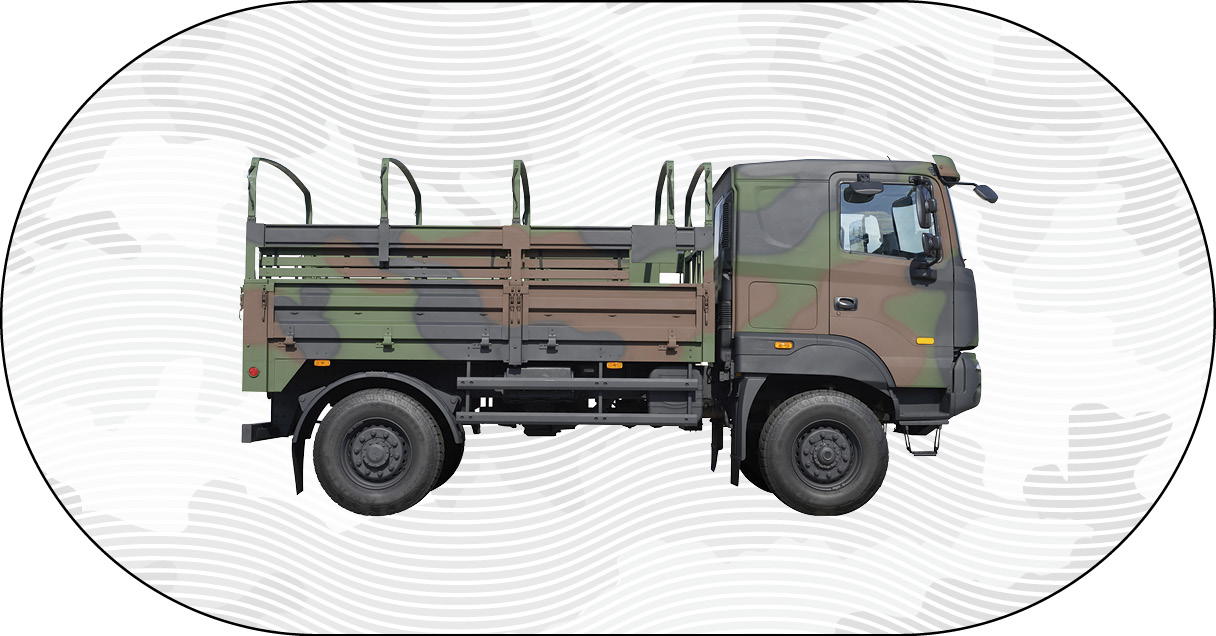
KIA’s currently developing, the Kia Medium Tactical Vehicle (KMTV), is set to replace the 2½-ton and 5-ton standard vehicles in the future. The successor to the 2½-ton vehicle combines a 280 horsepower diesel engine with an electronic 8-speed automatic transmission, making driving more straightforward. It’s also designed for off-road driving, with all-wheel drive (AWD) delivering power to all four wheels.
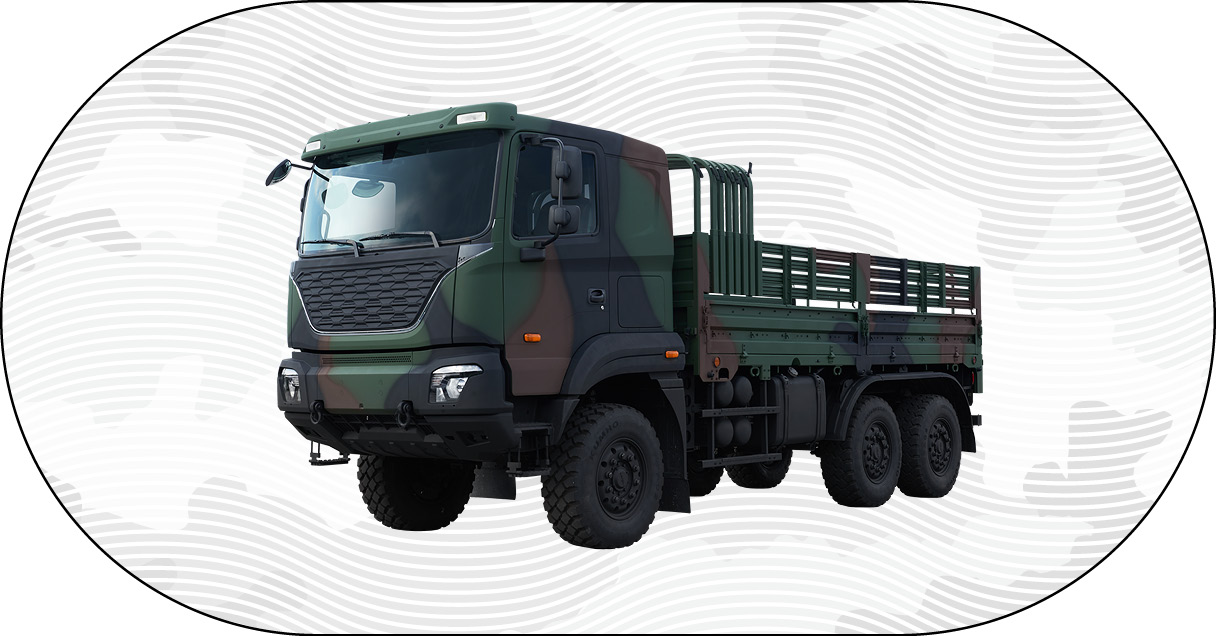
The successor to the 5-ton vehicle will transmit power to all six wheels, combining a 330 horsepower diesel engine with an electronic 8-speed automatic transmission. Both the 2½-ton and 5-ton successors are equipped with a device that can adjust tire pressure on soft terrain where normal driving is impossible, allowing tire pressure adjustments at the touch of a button from the driver’s seat, thus maintaining excellent mobility even in rugged
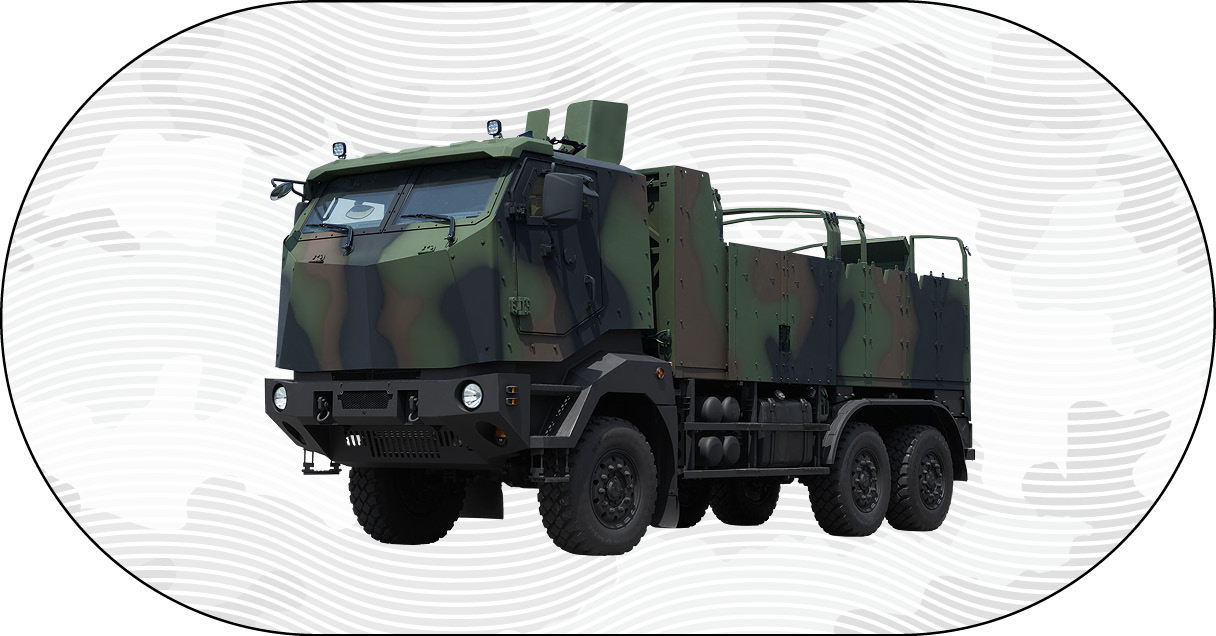
The armor kit specification for the KIA 5-ton Medium Tactical Vehicle showcases robust capabilities, focusing on enhancing personnel protection with an armored design that improves ballistic performance. The front is wedge-shaped to prevent bullets from penetrating the armored plates, and except for openings allowing rifle protrusion, the cargo bed sides and rear are surrounded by armored plates.
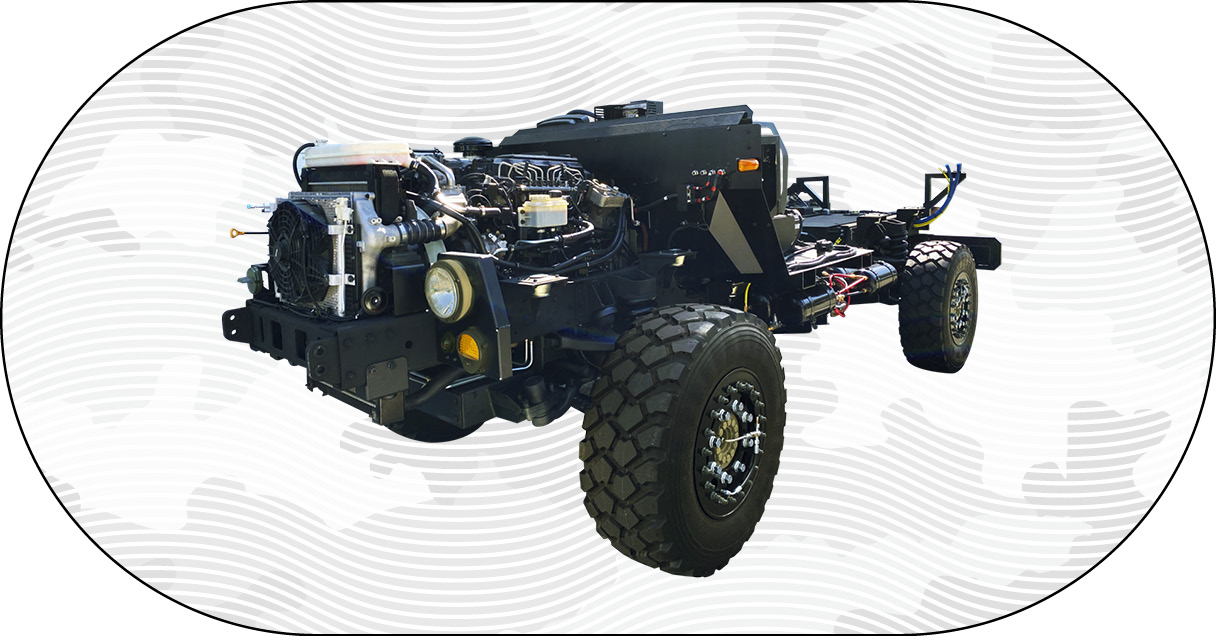
These vehicles are intended for troop transport and large material support, combining high-performance diesel engines and electronic automatic transmissions as standard. The armored body is designed to protect against regular bullets and anti-personnel mines, and the vehicle can move at 48 km/h even with a flat tire, facilitating quick escape from hazardous areas.
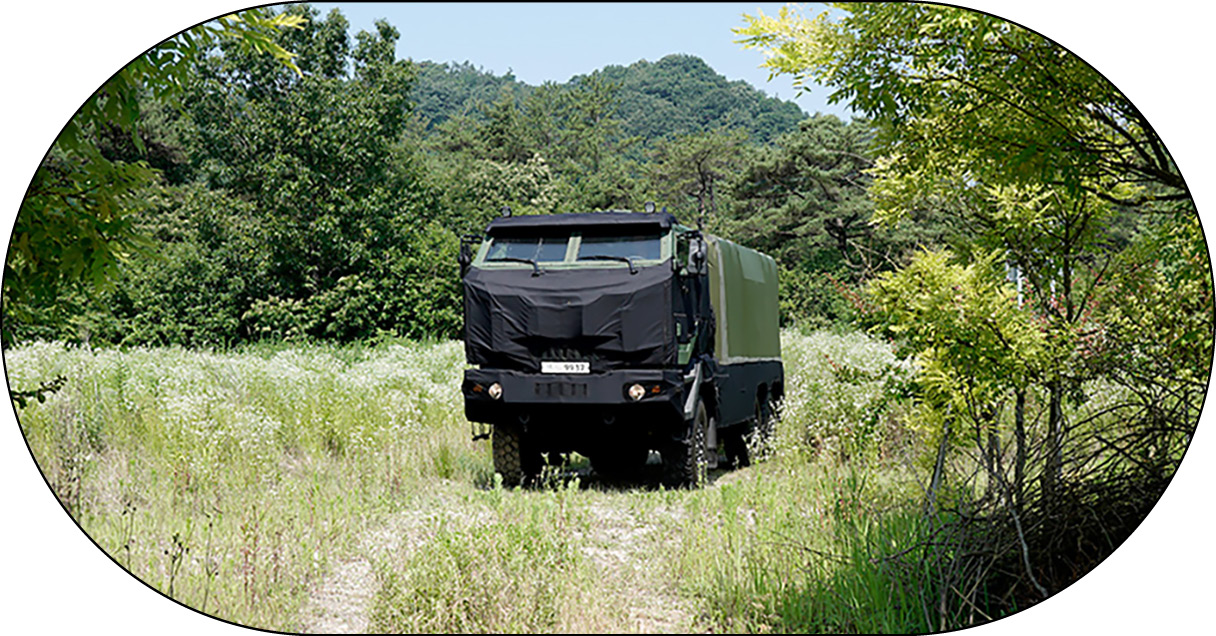
Additionally, the cargo bed is equipped with an electric hydraulic rear door that can be opened and closed with a button, featuring a stair-like structure that allows two people to quickly embark or disembark. This design ensures that soldiers can safely exit the vehicle without jumping from the cargo bed, which is over 1m high. The seating area in the cargo space also includes individual warm air supply features, considering the comfortable transportation of troops. These vehicles are primarily intended for frontline combat units.
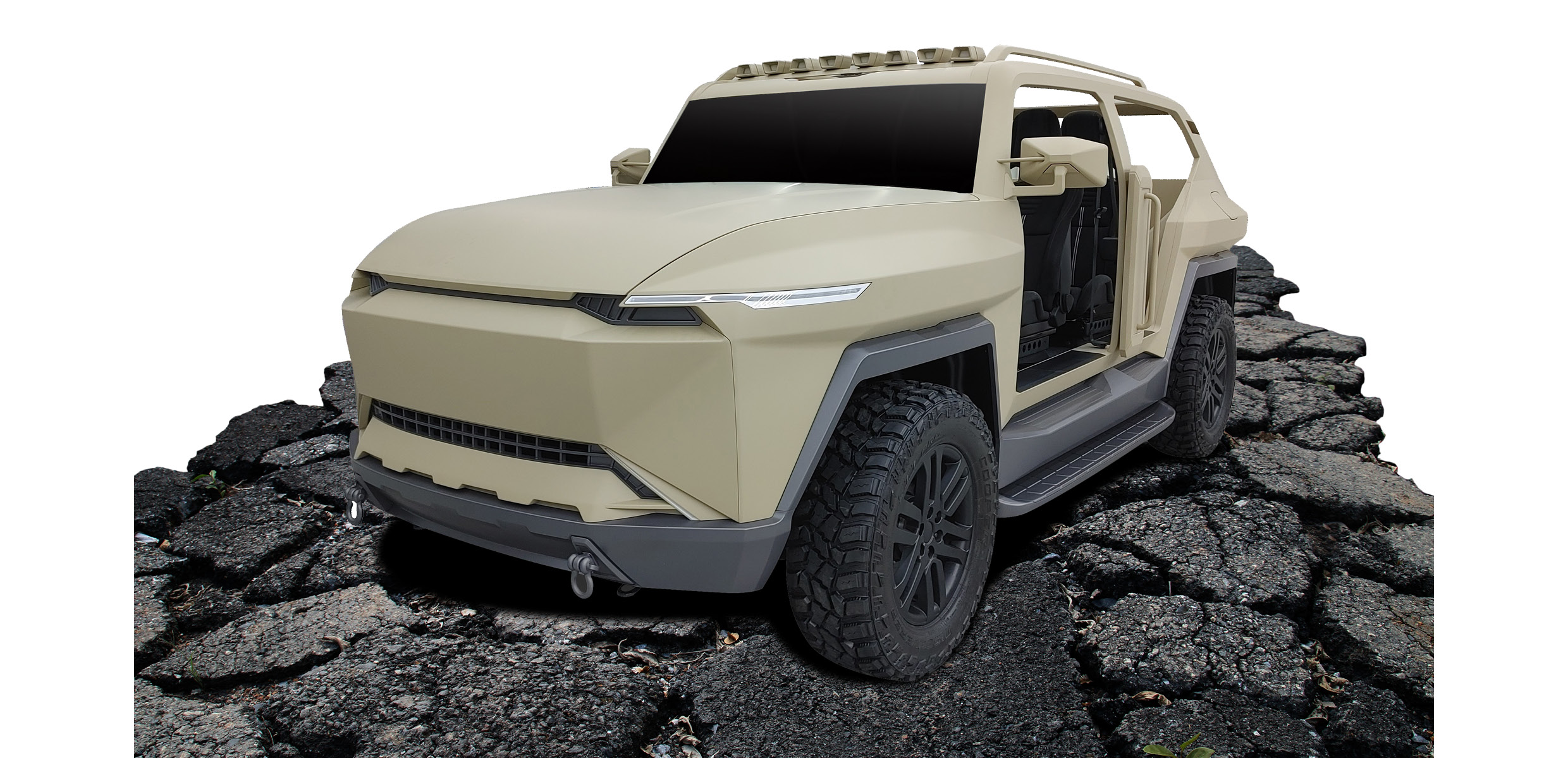
KIA’s Light and Medium Tactical Vehicles will serve as the new legs of the national military. However, KIA doesn’t stop there and is also exploring the electrification of military vehicles, including hydrogen fuel cell vehicles. The low noise and low heat systems of electrified vehicles make them suitable for military use, enhancing survivability.
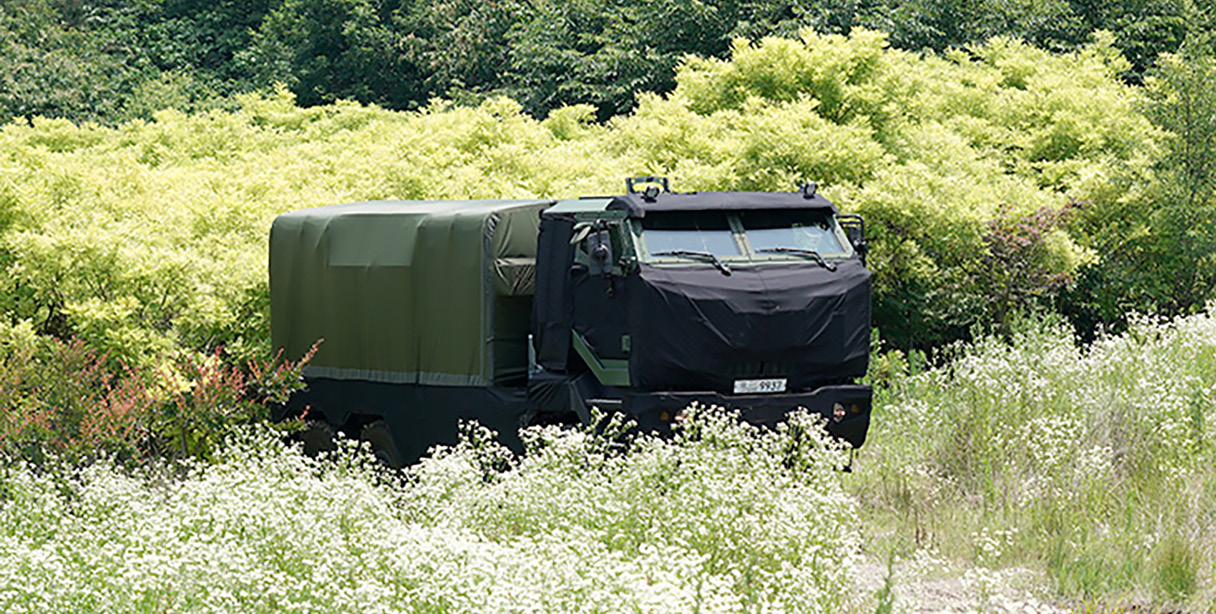
There’s a saying, “Only those with the power to protect themselves can talk about peace.” KIA’s military vehicles tirelessly serve peace and national security. The purpose of military vehicles is to carry out operations accurately and protect the soldiers on missions. KIA understands this well, which is why they dedicate their utmost effort in developing military vehicles for Korean armed forces. Many hope KIA’s military vehicles will continue to serve as a strong support for the safety of their nation and its armed forces.